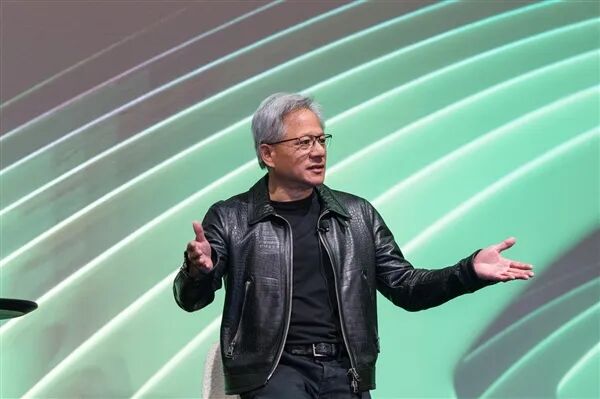On May 5, 2025, the “Chip Security Act” submitted by US Congressman Bill Foster sent shockwaves through the global semiconductor industry. The act mandates companies like Nvidia to implement chip tracking technology, enabling real-time location tracking and remote lockdown of AI computing devices flowing into the Chinese market. This “technological shackle” policy marks a shift in the US technology war against China from export controls to underlying architecture control, attempting to lock down the flow of computing power in the digital age through geographical fencing in the physical world. Notably, on the day the act was announced, Nvidia’s market value evaporated by $18 billion, TSMC’s 3nm production line utilization dropped below 65%, and the EU urgently launched a processor R&D program—this offensive and defensive battle is reshaping the underlying logic of the global technology supply chain. US Congressman Bill Foster from IllinoisCore Content and Background of the Act: Precisely Blocking the “Gray Channels”
US Congressman Bill Foster from IllinoisCore Content and Background of the Act: Precisely Blocking the “Gray Channels”
1. Technical Mechanism
The act requires chips to be equipped with a location verification module, which determines the device’s geographical location by measuring signal transmission time differences; unauthorized chips will be remotely disabled. Foster claims, “Existing chip hardware (such as secure encryption processors) already supports this functionality.”
2. Political Drive
Rare bipartisan support for the legislation:
-
Republican Congressman John Moolenaar emphasized, “China is training AI large models with our chips, which is a national security disaster.”
-
Democratic Congressman Raja Krishnamoorthi stated, “Smuggled chips support 70% of China’s AI computing power demand.”
US Customs data shows that in 2024, over 450,000 Nvidia chips were transshipped to China via Southeast Asia, with the H20 special edition accounting for 72%.
3. Corporate Realities
A Nvidia spokesperson clearly stated, “Current chip architecture does not support post-sale tracking; modifications would lead to performance loss and cost increases.” Technical documents indicate that the security encryption processor of the H100 chip is only used for anti-tampering and lacks geographical fencing capabilities.
Evolution and Current Status of Sanctions: From Sales Restrictions to ‘Technological Lockdown’
-
Path of Sanction Escalation
- 2022: The Biden administration banned the sale of A100/H100 chips, and Nvidia launched the H20 special edition (with computing power reduced to 50%).
- 2024: The Trump administration halted H20 exports, pressuring Vietnam and Malaysia to intercept transshipments.
- 2025: The new act shifts to “embedded control,” attempting to achieve full lifecycle monitoring of chips.
2. Current Focus of the Game
- China’s Stockpiling: Companies like ByteDance and Tencent have stockpiled $16 billion in H20 chip orders, sufficient to meet demand for the next 18 months.
- Alternative Solutions: Huawei’s Ascend 910B chip achieves 89% efficiency of the A100 in training the LLaMA-7B model, while SMIC’s 28nm capacity expands to 720,000 units per month.
Technological Hegemony Faces Triple Backlash
-
Controversy Over Technical FeasibilityMIT lab tests show that 5G network latency fluctuations reach 20 milliseconds, leading to a geographical location misjudgment rate exceeding 15%. An internal report from Nvidia engineers points out, “Remote lockdown requires breaking the device’s underlying firmware, which may trigger large-scale hardware failures.”
-
Legal and Market Countermeasures
- The EU opposes the chip-embedded tracking module on the grounds of violating the General Data Protection Regulation (GDPR);
- Google and Amazon warn, “If data centers are monitored in real-time, it will lead to customer loss.”
Cost of Supply Chain Fragmentation
Forced Autonomy and Ecological Breakthroughs
China adopts a “dual-track strategy” to respond to the blockade:
-
Short-term Workarounds
- By splitting server components (transporting GPUs separately from motherboards) and transshipping through countries like Serbia in Central and Eastern Europe, the amount of chip smuggling detected in Q1 2025 decreased by 37% year-on-year.
- DeepSeek employs a heterogeneous computing architecture, improving the efficiency of domestic chip clusters to 82% of Nvidia’s solution.
Long-term Breakthroughs
Market Countermeasures
China implements export controls on semiconductor materials such as gallium and germanium; US defense contractors report that the price of high-purity gallium surged by 320% in 2025.
The Dialectic of Blockade and Innovation
The US attempts to use “physical lockdown” to block the flow of computing power, but the laws of technological innovation are dismantling technological hegemony: Stanford University research shows that from 2020 to 2025, the citation rate of AI papers by Chinese scholars in US institutions increased by 214%, and the activity level of the Huawei Ascend developer community surpassed that of Nvidia’s CUDA users in Asia. As Nvidia CEO Jensen Huang stated, “The market will ultimately choose the optimal technology combination; artificially building walls will only accelerate the maturity of alternative ecosystems.” The outcome of this offensive and defensive battle may have already been written in the laws of history.

As Nvidia CEO Jensen Huang stated in his speech at Stanford University, “True technological leadership comes from continuous innovation in an open ecosystem, not from closed control over existing achievements.” The outcome of this offensive and defensive battle may be predetermined—when the chains of the physical world attempt to confine the computing power of the digital world, technological innovation will ultimately find new cracks, just as flowing water can always penetrate through rock crevices.
Scan to follow “Eight Hundred Miles of Yinfu”

Images in the article are sourced from the internet